On May 19, 2023, the Survey of Medical Assessment for Robot Technology (SMART) seminar, organized by the Peking University Institute for Global Health and Development (GHD) and the China Association of Medical Equipment, was successfully held. The seminar, featured keynote speeches and roundtable discussions regarding the value and technology assessment of surgical robots. Nearly a hundred guests from academia, government, clinical practice, and industry, as well as faculty and students from Peking University, attended the seminar.
Part One: Opening ceremony
The opening ceremony of the seminar was presided over by Professor XU Ming , ead of the Global Health Department at the School of Public Health of Peking University and Vice Dean of GHD.
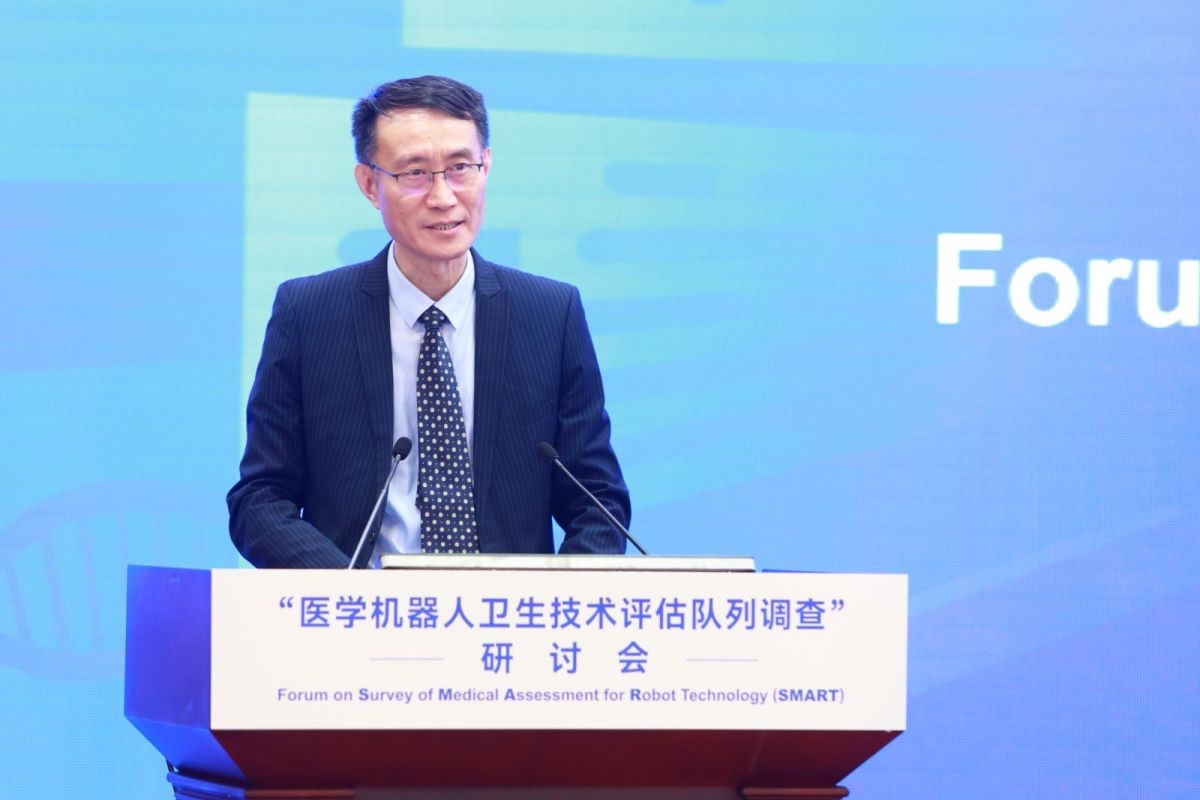
Professor XU Ming presiding over the opening ceremony
QIAO Jie, Executive Vice President of Peking University, Director of Peking University Health Science Center, and Academician of the Chinese Academy of Engineering, delivered the welcome speech. Other speakers included WANG Chen, President of the Chinese Academy of Medical Sciences and Vice President of the Chinese Academy of Engineering; LIU Qian, President of the Chinese Hospital Association and former Vice Minister of the National Health Commission; Gordon G. Liu, Distinguished Professor of Changjiang Scholars at Peking University, Dean of GHD, and Member of Chinese Academy of Medical Sciences; and HOU Yan, President of the China Association of Medical Equipment and former Director of the Planning and Information Department of the National Health Commission.
Academician QIAO Jie warmly welcomed the experts, scholars, and industry leaders attending the seminar on behalf of Peking University. She took this opportunity to express heartfelt gratitude to the National Health Commission, the Ministry of Industry and Information Technology, experts from domestic and international institutions, various associations, and medical technology companies for their long-term support and assistance to Peking University. In the face of the profound changes globally, public health development in the post-COVID-19 era has ushered in strategic opportunities, as well as major challenges. The scientific and technological revolution and industrial transformation is accelerating, and the information technology characterized by digitalization, network and intelligence is permeating all walks of life. QIAO Jie emphasized that medical robots are at the forefront of healthcare technology. The technology assessment of medical robots can empower the transformation and upgrading of the healthcare sector, enhancing clinical diagnosis, treatment, and public health governance. She hoped that the GHD and the Medical Department of Peking University could collaborate to build an interdisciplinary platform, fostering an open, integrated, and mutually beneficial international academic community.
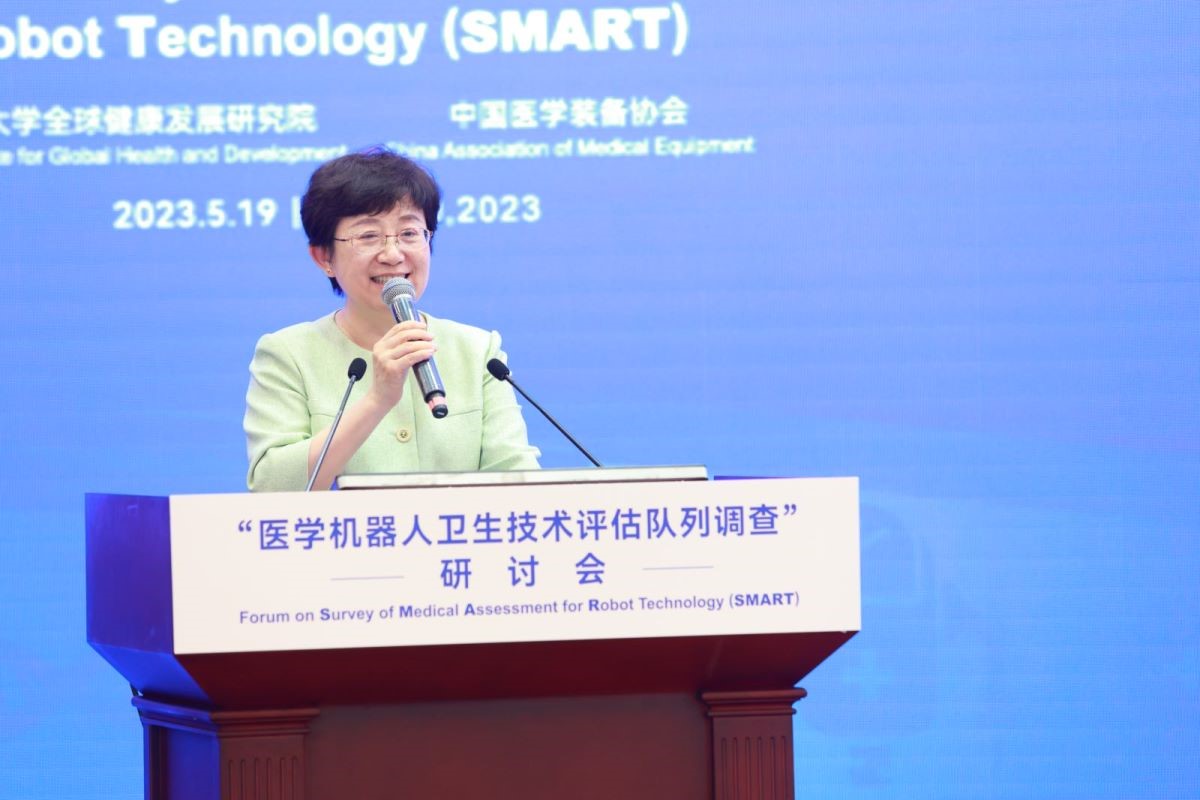
Speech by Academician QIAO Jie
Academician WANG Chen stated that SMART is a prospective project that addresses significant real-world medical issues, providing meaningful and valuable data from the economic, social, and health policy perspectives. Despite the rigorous scientific process involving experimental design and influence from various factors, he believed that under the leadership of Professor Gordon G. Liu and with the support of other experts, the study would achieve positive results. Emphasizing the assessment of medical robots, he further stressed that healthcare is vital to national welfare and the ultimate interests of people, beyond merely a supportive and service-oriented industry. Ensuring success in this field requires adherence to economic principles. Finally, he expressed his wish on SMART’s success.
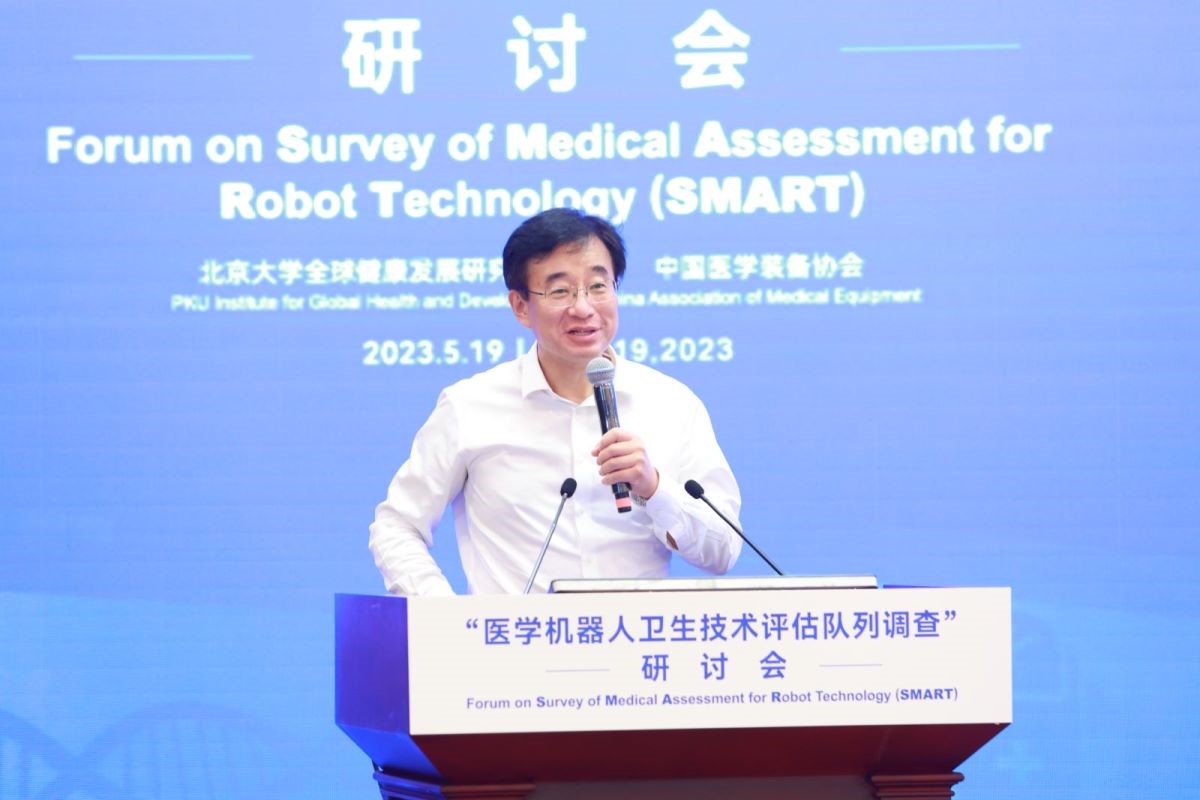
Speech by Academician WANG Chen
President LIU Qian believed that the seminar was necessary and timely. New business models in the digital economy has been emerging, impacting economic growth and social services. The application and development of medical robots, as carriers of digital technology, will create new requirements for existing governance systems. The application of medical robots encompasses multiple disciplines, technologies, and practices. Different from traditional drug assessment models, the assessment of medical robots lacked clear and direct technical means, necessitating further exploration and research. President LIU emphasized that digital application technology features scenario innovation, such as the shift from traditional taxi services to ride-hailing services, achieved through digital technology to provide higher-quality services to users. He stressed that the scenario innovation of medical robots warrants our consideration and attention. This assessment research is an important and urgent task serving the new era, new situations, and new development, marked by high professionalism and innovation. The China Hospital Association will support the promotion of this project to better serve patients.
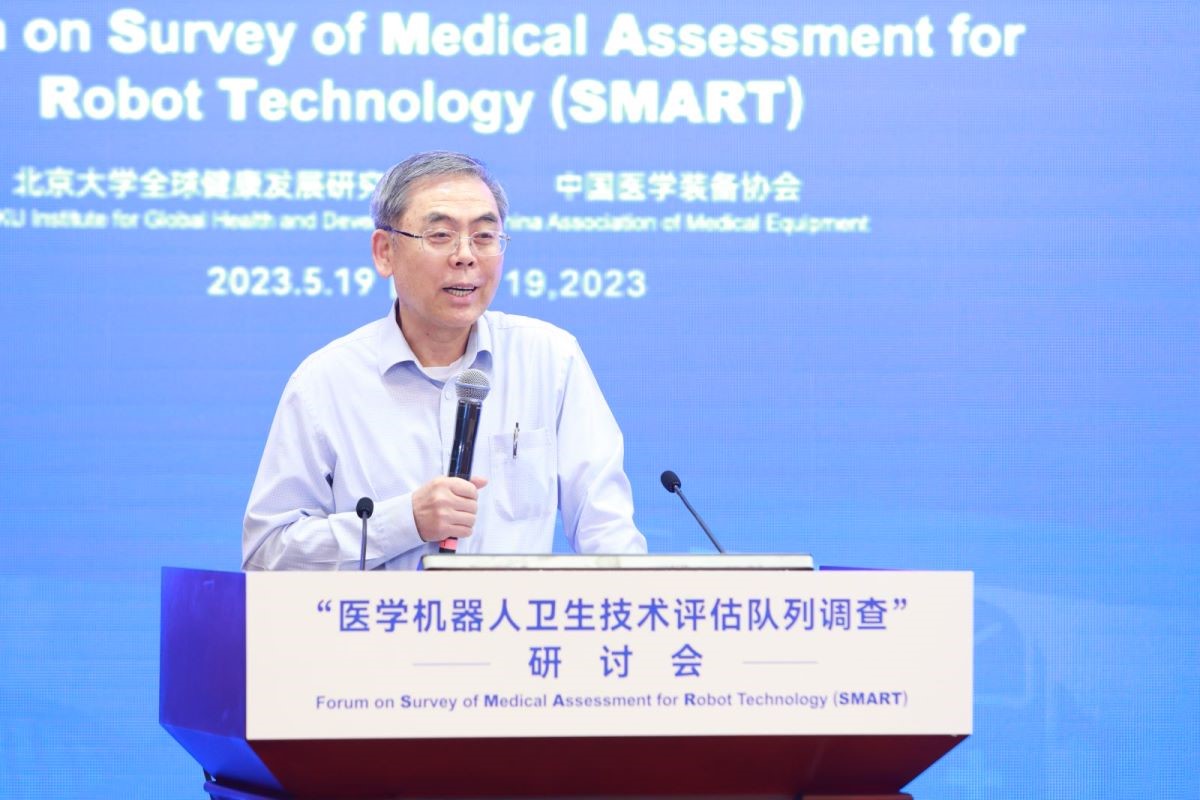
Speech by President LIU Qian
Professor Gordon G. Liu expressed his gratitude to the experts attending the seminar and provided a systematic introduction to the project's background. As technologies such as artificial intelligence and machine learning have become key arenas for cooperation, competition, empowerment, and development among nations, data has increasingly become a crucial production factor, following land, capital, and talent. The continuous upgrade of digital means such as cloud computing and 5G communication empowers the digital process of pharmaceutical research and clinical medicine, further assisting clinicians in safeguarding public health with precision, breadth, efficiency, and warmth. Undoubtedly, the key to promoting modern medical technology innovation is long-term investment, and fair and effective returns are important factors in sustainable investment. Professor Gordon G. Liu pointed out that the growth of medical expenditure in many countries has exceeded the pace of economic growth. Supporting medical insurance payment decisions with health economic assessments of new methods has become an essential option for medical insurance policies in all countries. Supporting the regulated and effective payment for medical devices, including innovative methods like medical robots, based on standardized and scientific health economic evidence still faces significant challenges. The difficulty lies in the lack of a systematic, long-term, and scientific large data comparison. Professor Gordon G. Liu emphasized that SMART is an extremely complex and challenging project, with no similar precedent in the world. He looked forward to the participating experts offering insights and guidance for the project's research design.
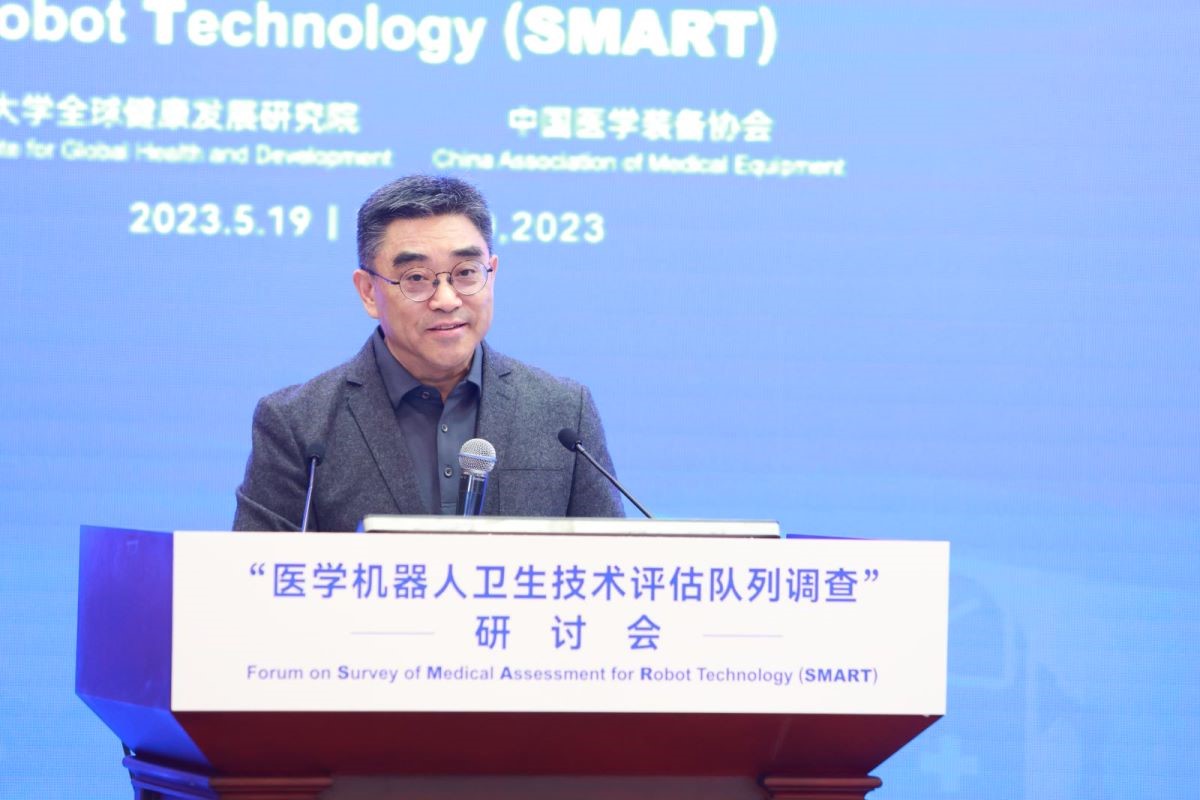
Speech by Dean Gordon G. Liu
President HOU Yan noted that medical robots are a significant product of the combination of high-end manufacturing and modern medical technology. The expanding application scenarios of medical robots are changing medical practices and service models profoundly, making medical robots an effective means of accessing high-quality medical resources, enhancing clinical safety levels, and improving patient satisfaction, while also driving continuous industrial innovation. She emphasized that as a new field of innovation in medical equipment, medical robots demonstrate growth momentum and advantages. Conducting medical robot technology assessment is crucial for the development of both demand and supply sides. It is a pioneering work that requires support and collaboration from all parties. She introduced that the China Association of Medical Equipment, as a platform for medical-engineering collaboration and innovation integration, committed to enhancing the service capabilities of healthcare institutions and promoting the development of the medical equipment industry. They will leverage expertise from experts and enterprises, align supply and demand, deepen cooperation with the GHD to advance the SMART project. They will also detail implementation plans according to laws and regulations, strengthen project and data security management, and provide a Chinese solution based on value-based healthcare concepts to contribute to the development of medical robots in China and globally.
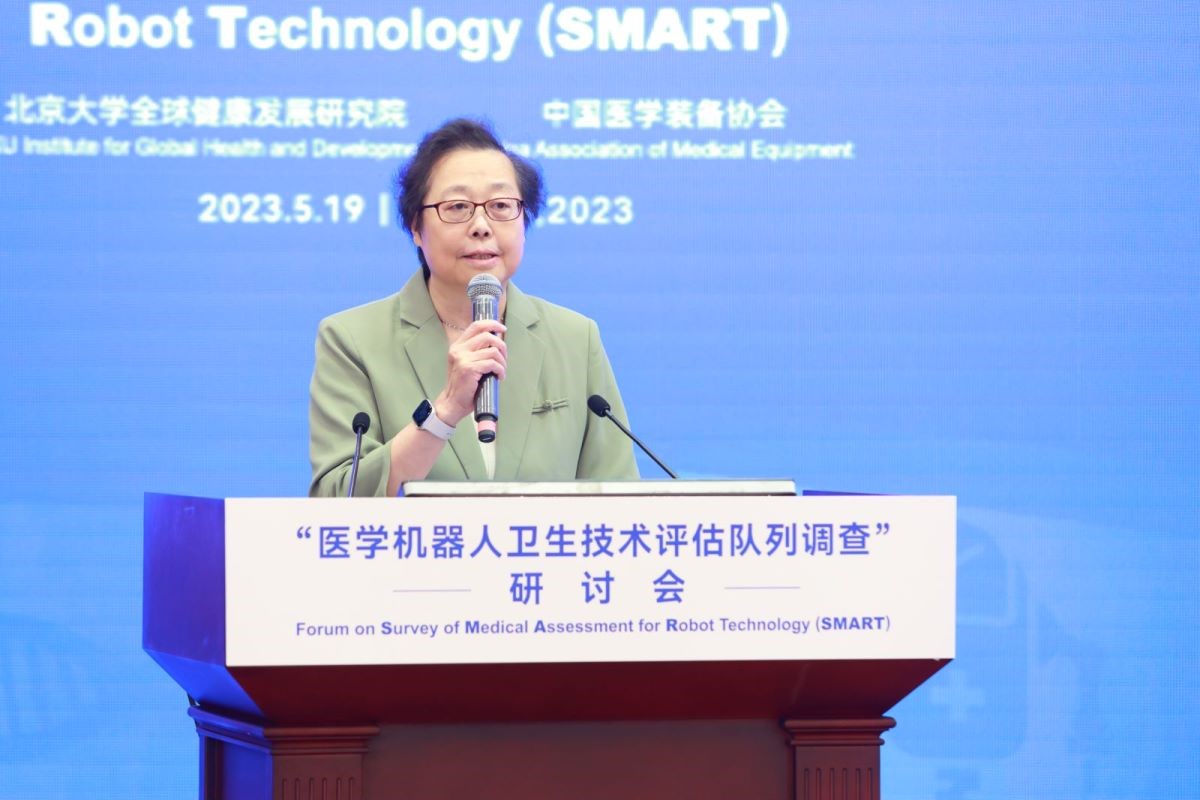
Speech by President HOU Yan
Part Two: Launch Ceremony of the "SMART China Research Network"
The launch ceremony was hosted by SUN Xiaowei, Vice President of the China Association of Medical Equipment and Chief Physician at Peking University First Hospital. Key figures including Academician QIAO Jie, Executive Vice President of Peking University and Director of Peking University Health Science Center; Academician WANG Chen, President of Peking Union Medical College; Academician WANG Jun, President of Peking University People's Hospital; President LIU Qian, President of the China Hospital Association; Professor Gordon G. Liu, Dean of the GHD; HOU Yan, President of the China Association of Medical Equipment; LIU Rong, Director of the Hepatobiliary and Pancreatic Surgery Department at the First Medical Center of the 301 Hospital; ZHANG Guojun, Secretary of the Party Committee of Beijing Children's Hospital; ZHANG Hongjia, President of Beijing Anzhen Hospital; ZAHNG Xiaoping, Director of Urology at Union Hospital affiliated with Tongji Medical College of Huazhong University of Science and Technology; LIANG Xiao, Deputy Director and Assistant to the President of the Qiantang Campus of Shao Yifu Hospital affiliated with Zhejiang University School of Medicine; and JIN Jiabin, Deputy Director of General Surgery at Ruijin Hospital affiliated with Shanghai Jiao Tong University School of Medicine, jointly launched the "SMART China Research Network."
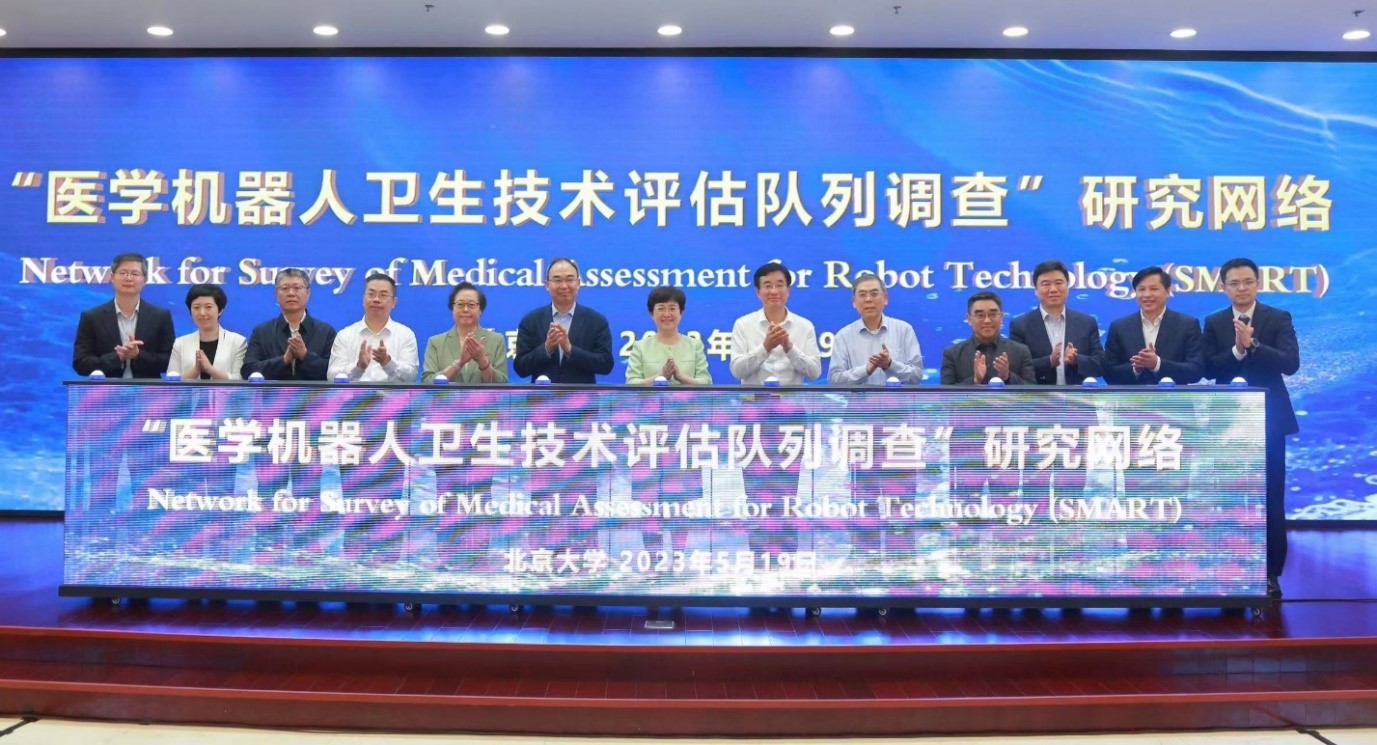
Photo of experts at the launch ceremony
Part Three: Keynote Speeches
The keynote speech session was chaired by the Vice Dean of the School of Economics at Peking University and Vice Dean of the Peking University Institute for Global Health and Development. Seven senior experts from China, South Korea, Japan, India, and the United Kingdom shared their insights on the development and technology assessment of medical robots.

Professor QIN Xuezheng chairing the keynote speech session
Director LIU Rong, Head of the Hepatobiliary and Pancreatic Surgery Department at the First Medical Center of the Chinese People's Liberation Army General Hospital, reported on the trends, emergence, and challenges of robotic surgery. He proposed that the future development of robotic surgery lies in artificial intelligence combined with robotic surgery, equating surgical robots, intelligent navigation, and automatic control with intelligent surgery.
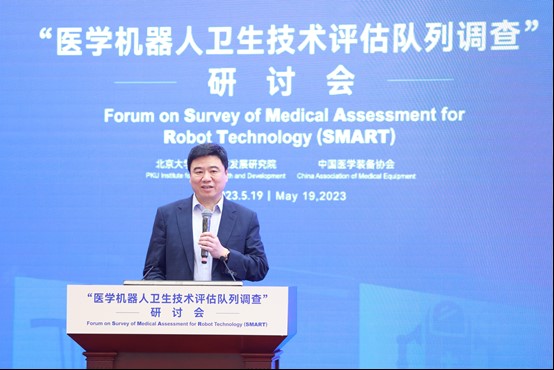
Keynote speech by Director Rong Liu
Anastasia Chalkidou, Deputy Director of Medical Technology assessment and Interventional Surgery Projects at the National Institute for Health and Care Excellence in the UK, shared the lifecycle approach to evaluating medical technology.
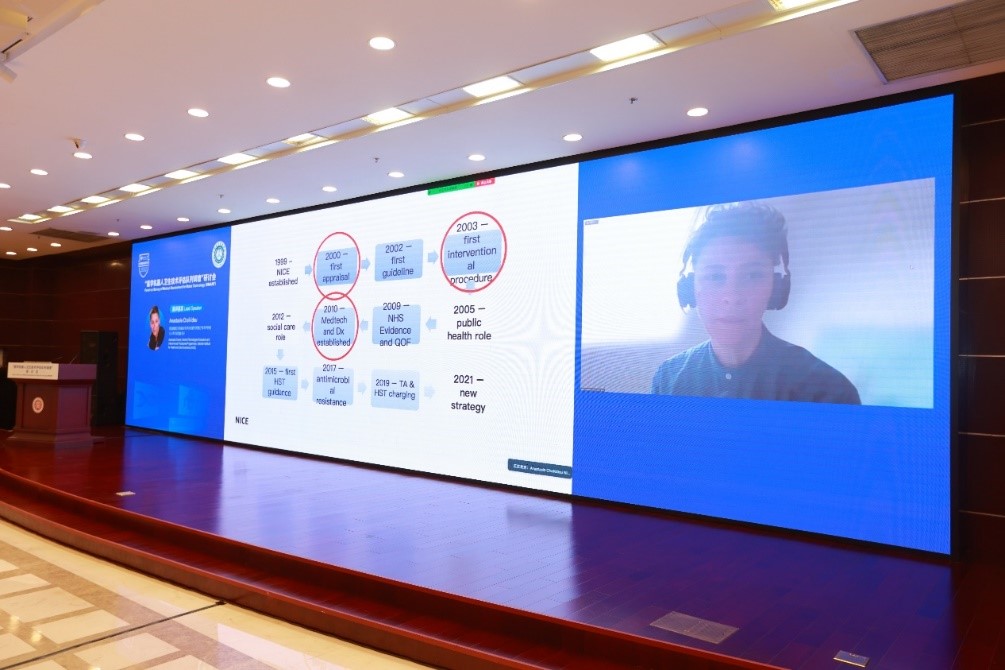
Keynote speech by Anastasia Chalkidou
Scott Tackett, Vice President of Global Access and Value Development at Intuitive Surgical, shared the value and economics of robotic-assisted surgery.
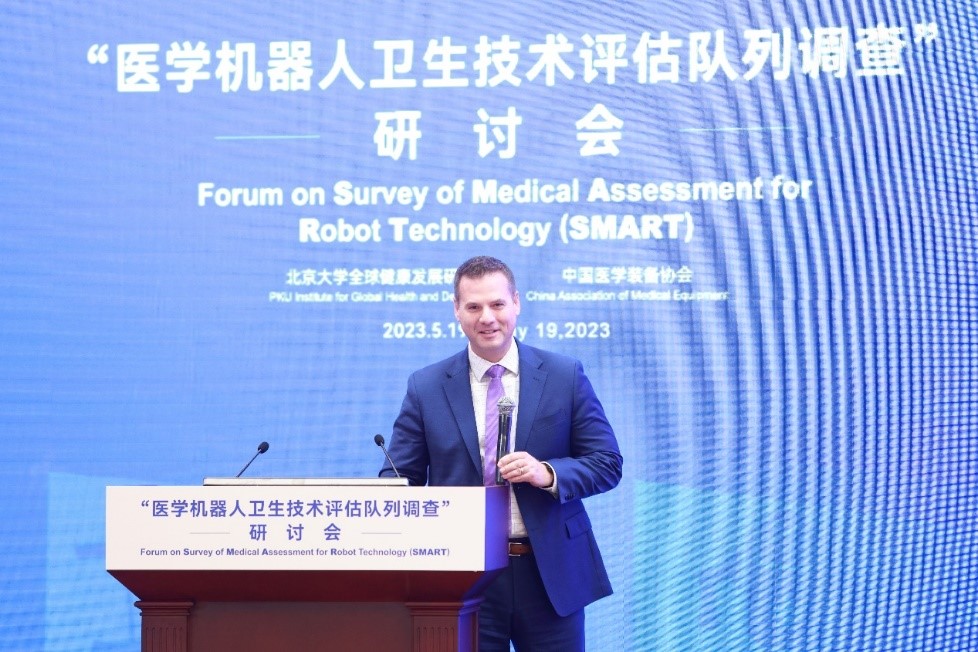
Keynote speech by Scott Tackett
Professor JIAO Bingli, a professor at the School of Electronics at Peking University and Director of the Ministry of Education Engineering Research Center for Mobile Digital Hospital Systems, compared artificial intelligence and robots, noting that artificial intelligence works within the scope of learning. He argued that the innovation, simplification of functions, discovery of functions, and input of implicit knowledge are debatable.
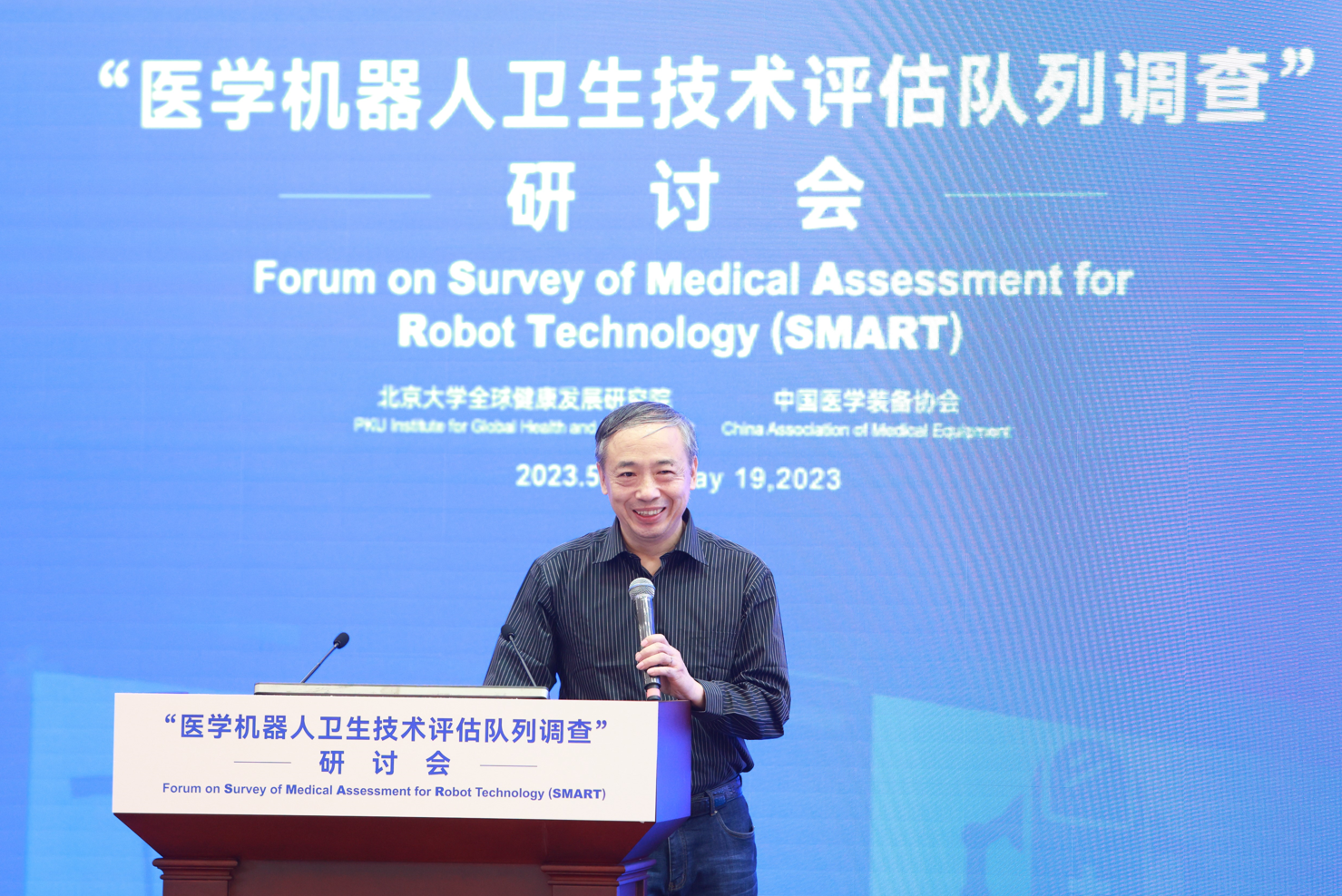
Keynote speech by Professor JIAO Bingli
Professor Chirantan Chatterjee from the Sussex Business School studied how a new OCT angiography (OCTA) technology, based on electronic medical record data of two common retinal diseases (diabetic macular edema and retinal vein occlusion), was adopted to benefit patients by replacing existing old imaging technologies in a non-profit environment.

Keynote speech by Professor Chirantan Chatterjee
Ataru Igarashi, a researcher at the Institute for Health and Global Policy, Associate Professor of Public Health at Yokohama City University School of Medicine, and Visiting Associate Professor of Medical Policy at the Graduate School of Pharmaceutical Sciences at the University of Tokyo, reported on Japan's healthcare system and the value of innovation. He compared the cost-effectiveness of robot-assisted laparoscopic surgery and Da Vinci surgery.
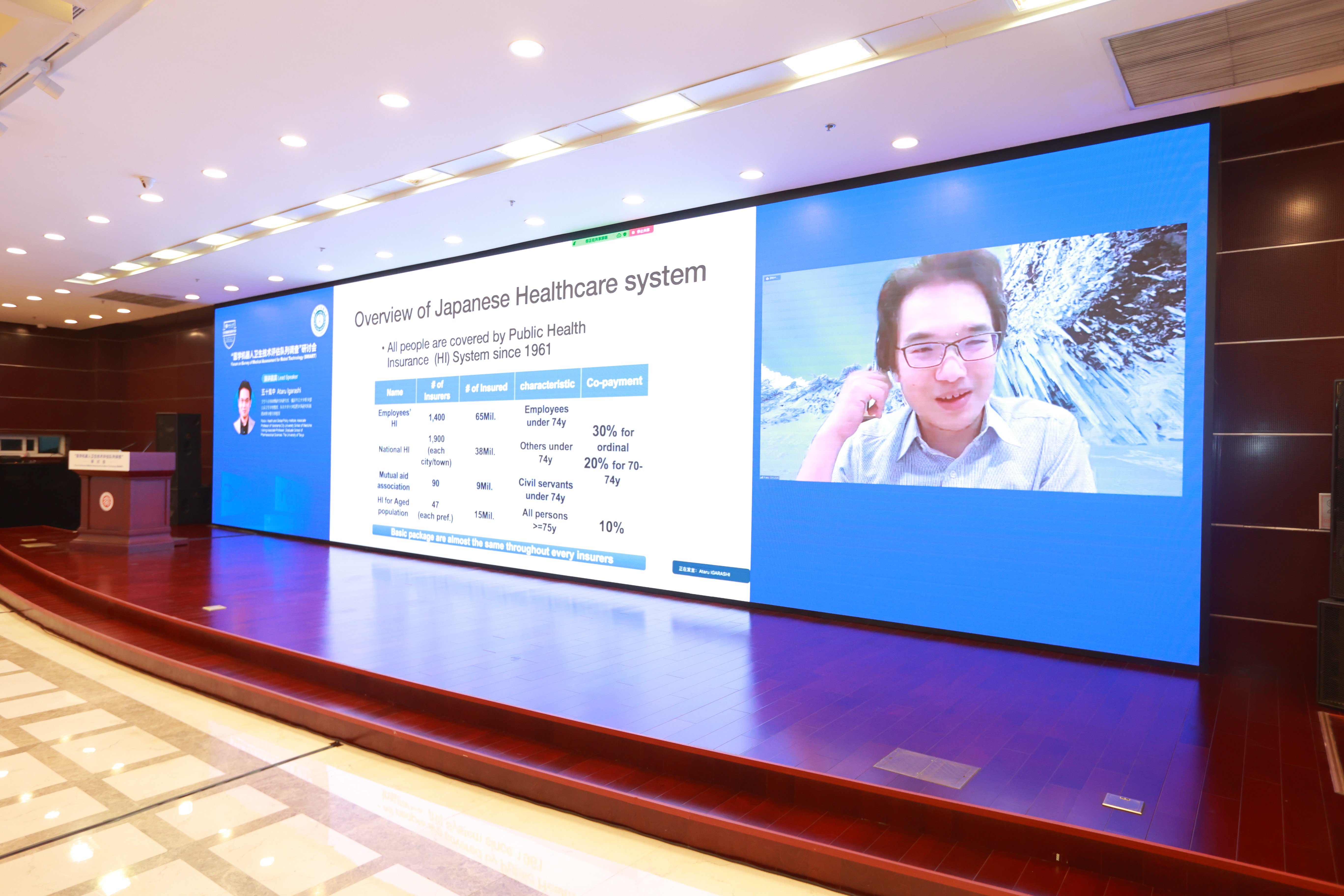
Keynote speech by Professor Ataru Igarashi
Jae Kyung Suh, Deputy Researcher at the National Evidence-based Healthcare Collaborating Agency (NECA) in South Korea, used systematic review methods to analyze whether robotic-assisted surgery was safe and effective compared to traditional surgery in Korea.
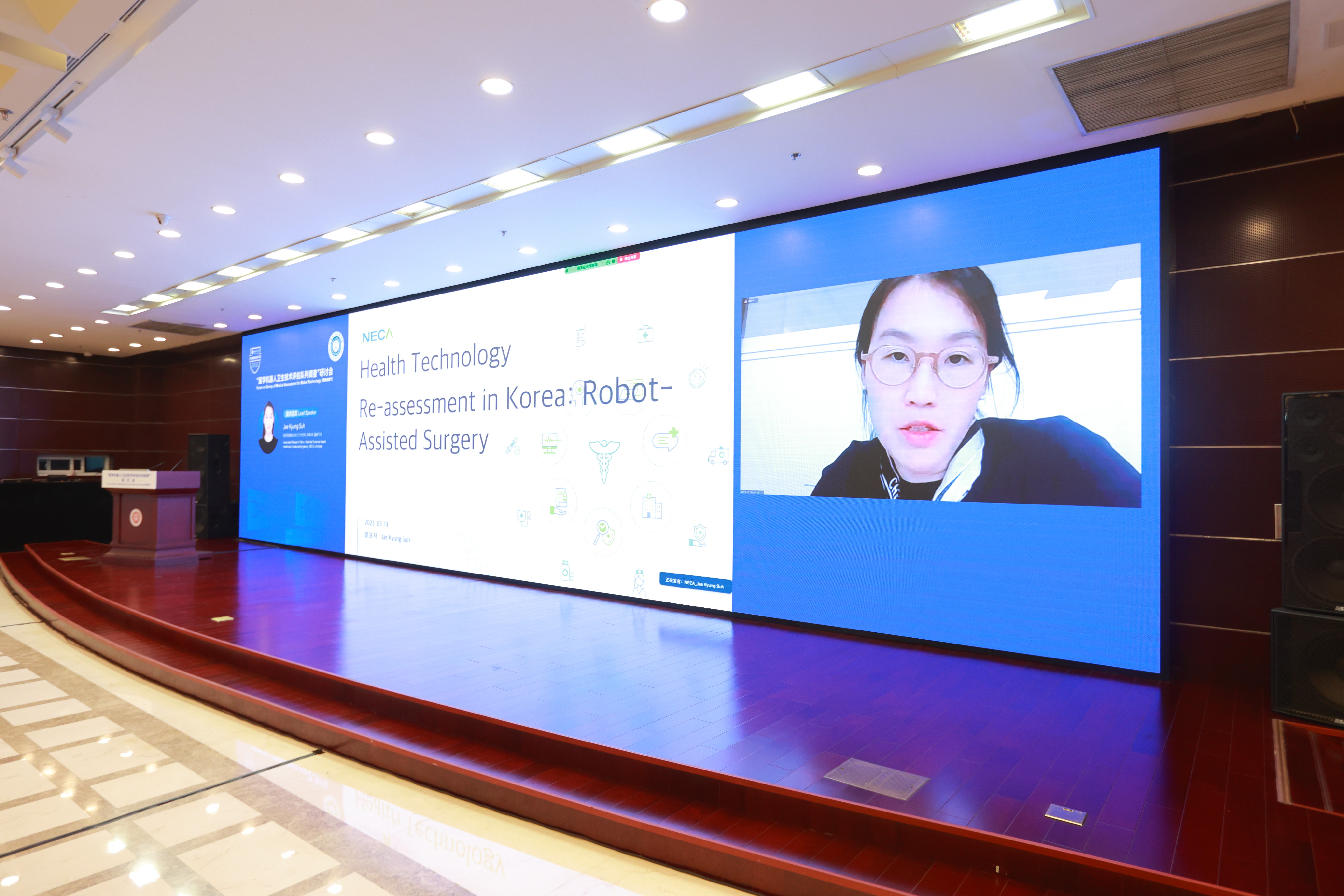
Keynote speech by Deputy Researcher Jae Kyung Suh
Part Four: Roundtable Discussion
Academician WANG Jun, President of Peking University People's Hospital, stated that adaptability, safety, reliability, and efficacy were all worth discussing, and the convening of this expert seminar was necessary. Any technology has advantages and disadvantages, and Academician Wang summarized the pros and cons of medical robots based on different diseases. Professor Zu-Teh Lee, former Chairman of Taipei Medical University, pointed out that "how to recognize the value of medical robot services through payment prices" is a fundamental principle in assessing medical robots.
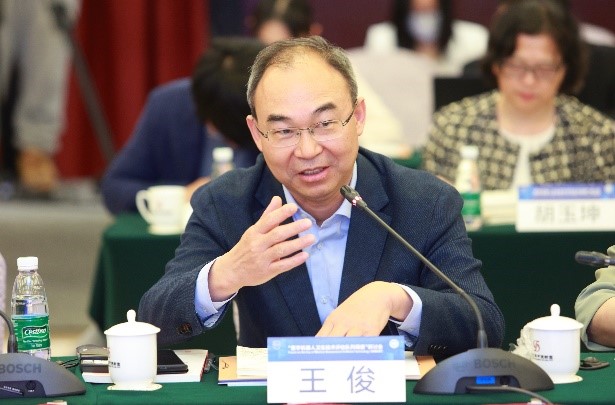
Speech by Academician WANG Jun

Speech by Professor Zu-Teh Lee
Subsequently, Professor Gordon G. Liu posed three questions for roundtable discussion with the attendees: First, is it worthwhile to conduct a cohort study on the health technology assessment of medical robots? Second, if it is worthwhile, what might be the greatest difficulties encountered during execution? Third, from a research design perspective, how can we best avoid these difficulties?
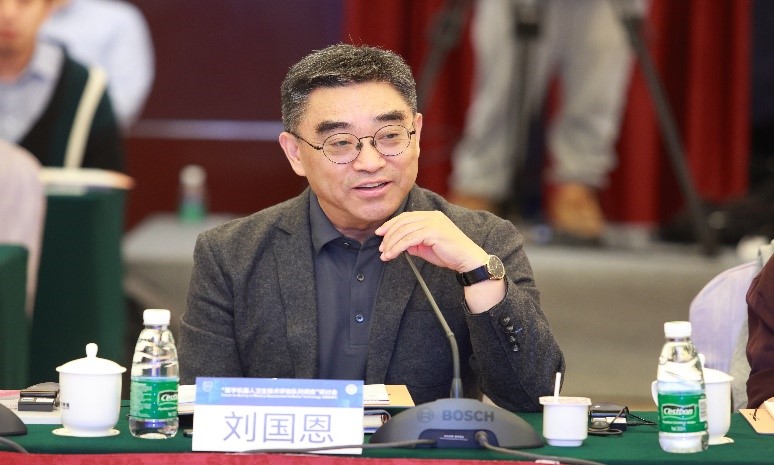
Professor Gordon G. Liu chairing the discussion
Other experts actively spoke on the three questions posed by Dean Gordon G. Liu, sharing their views and offering effective suggestions. These included the randomness of population selection in RCTs, potential issues in conducting cohort studies, and the need to differentiate among different diseases in research design. For example, Associate Professor XU Qiang, Deputy Director of General Surgery at Peking Union Medical College Hospital, highlighted the importance of considering the coverage of the medical insurance system when conducting RCTs for laparoscopic and robotic surgeries, with the main difficulty being data acquisition. Professor ZAHNG Xiaoping, Director of Urology at Union Hospital affiliated with Tongji Medical College of Huazhong University of Science and Technology, pointed out that medical robots need to match not only the departments but also the types of diseases, with attention to safety and cost-effectiveness during the matching process. JIN Jiabin, Deputy Chief Physician of General Surgery at Ruijin Hospital affiliated with Shanghai Jiao Tong University School of Medicine, fully endorsed the value of this seminar and noted that the upgrade cycle of medical robot companies is fast, with short learning curves, allowing surgeons to master and apply medical robots in a relatively short time.
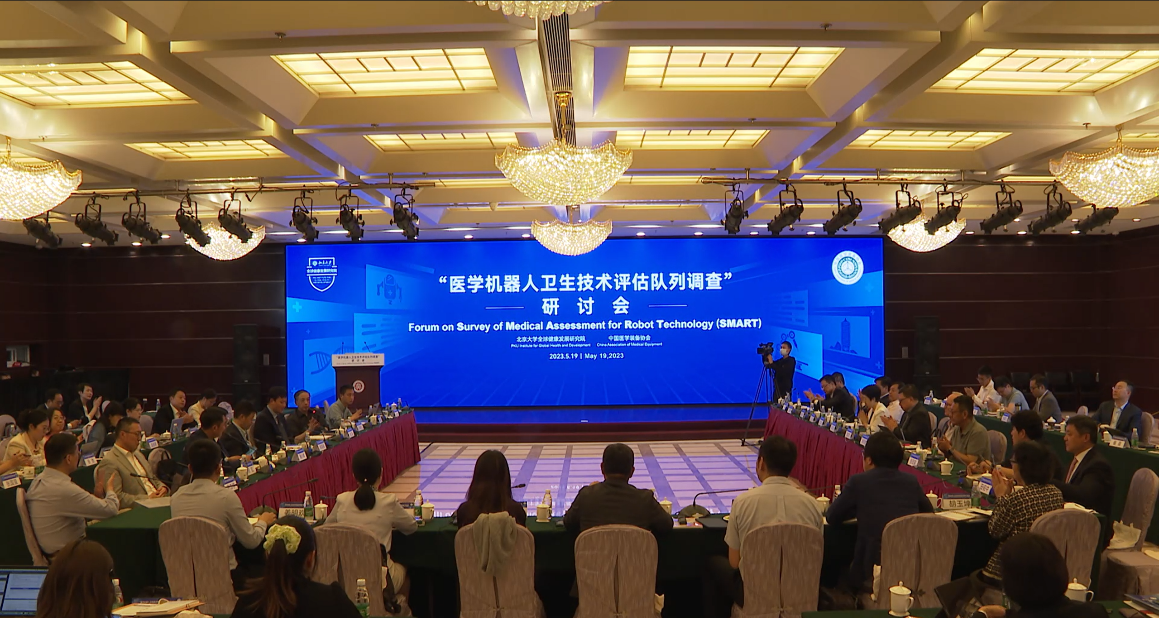
Roundtable discussions
The successful convening of this seminar marked the establishment of the first China Research Network on the Survey of Medical Assessment for Robot Technology (SMART), which aims at building a real-world research platform for medical robots, enhancing the level of health technology assessment of medical robots in China, and providing scientific evidence for optimizing the health technologies application and medical insurance payment policies.
(ZHAO Huitong, HE Qinghong, and LIU Meng/Text)